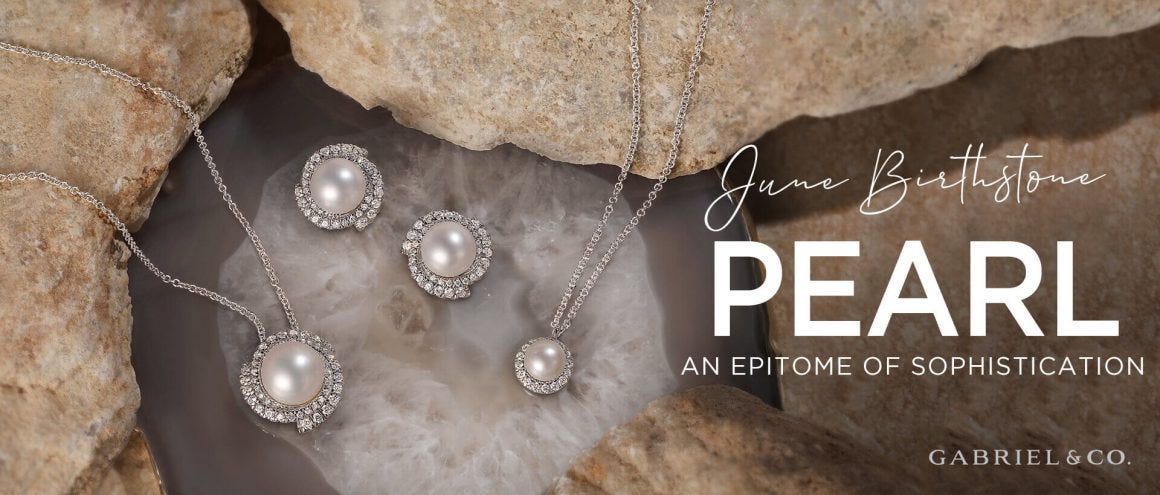All about the Delicate June Birthstone — Pearl

Pearl is one of the most beautiful gems extracted delicately from a living mollusk. The features of pearls — such as the lustrous shade, fragile build, and royal feel — are more than enough to spellbound everyone. One couldn’t help but agree with Grace Kelly when she said, “The pearl is the queen of gems and the gem of queens!”
What’s more, it’s one of the three birthstones of June! The association seems apt as the inherently spirited persona of June-born would work exceptionally well with this stone of sincerity.
How Are Pearls Made?
While most gemstones are mined or extracted from rocks, we get pearls from living, breathing marine creatures. The pearls are nothing but a way for these mollusks — oysters or mussels — to protect themselves! When a tiny foreign object enters the shelled body, the creatures secrete layers of crystalline substance and coat that object with it. This coating — called nacre — gives the gem its subtle shimmer.
As easy and quick as this process sounds, it actually takes place over a long time. An average-sized pearl usually develops within six months. As for larger pearls, they take as much as four years to mature. A mollusk usually produces three pearls in its lifetime; natural pearls, therefore, are not only expensive but also quite rare.
This huge rift between the supply and demand of pearls has led people to start pearl farming. Here, we see a foreign object is surgically implanted in the mollusk’s mantle tissue. The creatures are provided with a conducive atmosphere where they can create pearls in peace. The result is smooth, perfectly round cultured pearls, ready to dazzle the world!
Unsurprisingly, farmed pearls are easier to get than natural pearls. But don’t worry! Both types are equally beautiful. It’s the fake pearls one has to look out for.
Types of Cultured Pearls
Cultured pearls come in four different types — Freshwater pearls, Akoya pearls, Tahitian pearls, and South Sea pearls.
1. Freshwater pearls — Freshwater pearls are more commonly harvested than the other types. These are commercial and hence, comparatively affordable. Produced in freshwater lakes and ponds, they are comparably small and have an irregular shape.
2. Akoya Pearls — Akoya pearls are perhaps the most common type of pearls extracted from the Akoya oysters. This saltwater type is set apart by its shimmery quality, perfect roundness, and larger size. Akoya pearls are what we imagine when we think about pearls!
3. Tahitian Pearls — Also known as black pearls, Tahitian pearls are produced on French Polynesian islands near Tahiti. They are extracted from black lip oysters, which gives them their signature black shade. But these gems are available in several colors.
4. South Sea Pearls — These gems shine in the shades of silver, golden, and classic white. They are primarily farmed in the Philippines, Indonesia, and Australia. Sea pearls are one of the rarest types due to their limited production and unique look.
How to Recognize Whether Your Pearls Are Fake or Real?
Fake pearls are artificial beads made from either glass, alabaster, or plastic. They are given a pearly coating to make them appear genuine. In fact, these faux pearls can fool you into believing that they are as authentic as natural or cultured pearls. Therefore, it is crucial to know the tricks helpful to distinguish them.
There are several tell-tale signs to recognize the authentic pearl — irregularities of the gem, traces of different colors, textured surface, heaviness, and minuscule drill holes. Even though these factors are helpful, it is recommended to visit a professional jeweler to set your doubts aside.
With Gabriel & Co., you need not worry about the authenticity of your pearls. We pride ourselves on using only the best, luminous genuine pearls in our jewelry!


Comments
Post a Comment